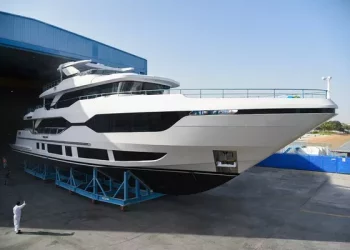It can still land at 200-250 km/h. How does it manage to slow down and stop so fast at such high speeds?
Today we’ll take a look at the three great decelerators of an airplane — the spoiler, the pushback and the wheel brakes.
All the spoilers stand up when the plane is taxiing down the runway after landing.
The spoiler acts like an airlock, increasing drag and reducing lift, leaving the wheels firmly on the ground.
When the plane is on the ground, the pilot lifts the pushback handle to reverse the flow of air from the engine to slow the plane.
Reverse thrust slows an aircraft by diverting the flow of the jet stream to produce a force in the opposite direction of propulsion, using devices on the engine.
These push back devices have the characteristics of easy operation, good installation performance, strong bearing capacity, small flow loss and good stability.
There are three main types of push back: grab type baffle gate push back, baffle gate push back, flap type rotating baffle gate push back.
The grab type baffle gate is divided into two kinds: one is installed behind the tail jet and the other is installed in the back section of the nacelle baffle gate baffle gate is mainly composed of a cascade and a choke gate.
When working, the backward airflow is blocked through the choke gate, and then the directional outflow through the cascade.
Flap type rotating baffle gate Reverse push flap type rotating baffle gate reverse push is composed of 4 or more groups of rotating baffle gate and driving unit.
When working, the baffle gate rotates, the internal one is responsible for blocking the flow, and the external one is responsible for the directional flow of air.
Wheel brakes The wheel brakes of an airplane are very similar to those of a car.
By rotating disc and fixed disc push each other, friction, and finally achieve the purpose of braking.
In addition, like cars, aircraft brakes have ABS (anti-lock braking) systems.
The latest market dynamics at any time to see, please pay attention to.












































